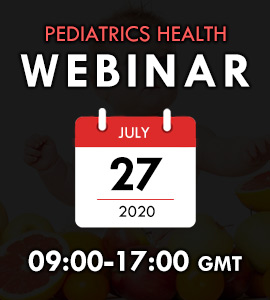
Mimoza Canga
University Ismail Qemali Vlora, Albania
Title: Evaluating different stressors in pediatric patients parents
Biography
Biography: Mimoza Canga
Abstract
Purpose: The aim of this study was to evaluate influencing stress factors, in parents of hospitalized children.
Objective: To analyze the correlation between different stressors, age and gender.
Material and Method: This study was conducted in the time period January-July 2019, in the General Pediatrics Department at Fieri Regional Hospital. The sample was composed by 200 parents where 86 (43.3%) were males and 114(56.7%) were females. The parents chosen as our sample had their children hospitalised for at least 5 days. They were willing to participate and completing the questionnaire given without any hesitation.
Statistical Analysis: The p≤0.05 values were considered significant.
Results: The majority of participating parents were females (56.7%), while the remained were males (43.3%). Most of the sample (45%) was 26-30 years old. 55% of parents had symptoms of depression originating from insomnia. 30% stated that they slept at work from insomnia. 14% of parents of hospitalized children were treated with insomnia medications and a high percentage of parents (86%) were not treated. The sample (23%) reported that they had cardiac rhythm disturbances, during their children hospitalization. Another data collected, showed that 80% of the sample was stressed out by waiting in the hospital whereas 42% of them felt stressed also by child’s oral problems. Parents of hospitalized children (83% ) felt stressed about the painful techniques applied to their children. Most of the parents (65%) were stressed out by the hospital environment. child´s sleep bruxism was considered as another stressor by 39% of the parents. The correlation between the two variables, age and sleep bruxism was statistically significant (P-value = 0.001). The correlation was statistically significant also between arrhythmia, age and gender with: P-values = 0.03 and 0.04 respectively. Age and child’s oral problems showed a moderate statistically significance (P-value = 0.04).
Conclusion: As a conclusion, this study can claim that parents of hospitalised children experience stress from different stressors such as: insomnia depression, dental visits, waiting for the diagnosis, sleep bruxism. There are other factors, which do not influence parental stress, some of these are: residence, divorced parents, lack of heat in the hospital, etc.

